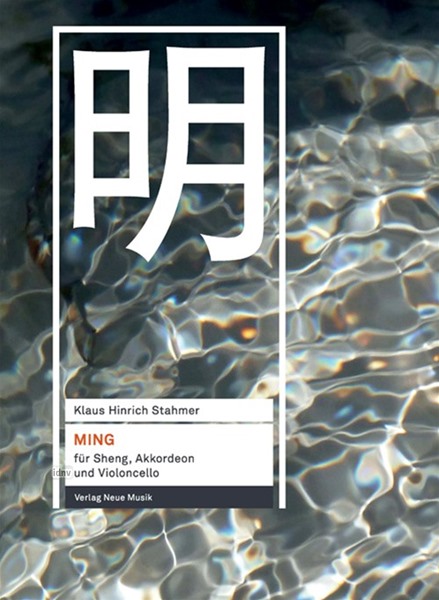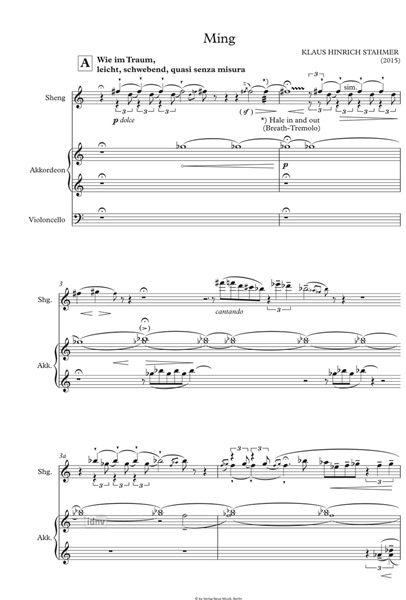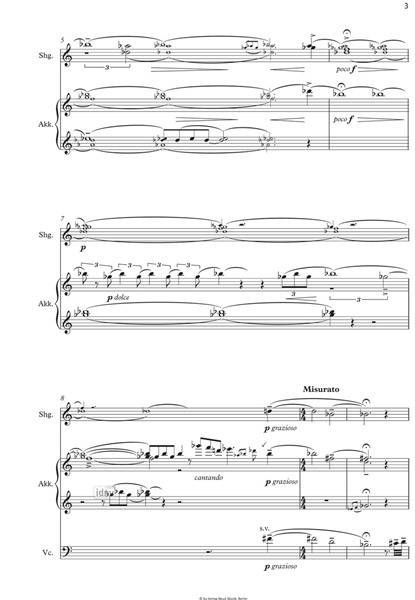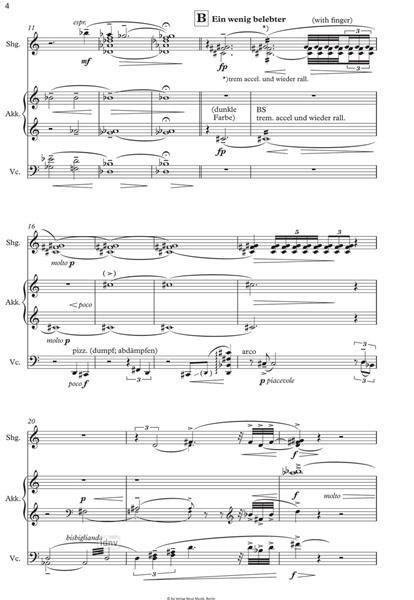Your basket is currently empty!
Ming für Sheng, Akkordeon und Violoncello (2015)
Instrumentation: Sheng, Accordion, Violoncello
Sheng, Accordion, Violoncello
Performance scores (3)
Included Part(s): Sheng, Accordion, Violoncello
Length (h:m:s): 00:15:00
Stapled
Format: 21 x 29,7 cm
Pages: 84
Weight: 300 g
Verlag Neue Musik / NM2382
ISMN: 9790203229575
ISBN: 9783733315863
incl. VAT
plus delivery costs
Sheng, Accordion, Violoncello
Performance scores (3)
Included Part(s): Sheng, Accordion, Violoncello
Length (h:m:s): 00:15:00
Stapled
Format: 21 x 29,7 cm
Pages: 84
Weight: 300 g
Verlag Neue Musik / NM2382
ISMN: 9790203229575
ISBN: 9783733315863
incl. VAT plus delivery costs
28,80 €
Delivery time: 10 days
In its literal sense, the Chinese character [ming] is primarily used to denominate something “light“, “clear“, “brilliant“. Looked upon in a wider context however, [ming] has the meaning of steps leading one into the light. This idea might stimulate the listener to feel the meditative tranquillity of the music. This piece, made up of a single movement written for three instruments (the Chinese mouth-organ sheng, accordion and violoncello), is characterised by brightness and a lack of drama. Through this piece, the soundscapes of both the Far East and the West appear and it invites the listener to experience something of the inner serenity of the Taoist religion. “MING” is an example of pure craftsmanship, which can be most accurately described by the term “Jing Zhan” (see the calligraphy above), translating as “well done” or “the search for perfection”. An important prerequisite for the success of such an idea lies in the concept of harmony. To this end, it was necessary to replace the twelve tone scale, which has become established in the modern West, with a different form of tonality. This can be described most closely as a harmony of tonal „non-intentionality“. In particular,
it is the special timbre of the Chinese sheng which makes you believe you are listening to Far-Eastern ritual music. Furthermore, the harmonic sequences, which to a certain extent have been derived from ancient Chinese musical theory, accompany your imaginaton on its intellectual journey into “another world”. Autumn is a time of transition from “being“ to “no longer being“ and is symbolised at the beginning and end of the composition. The tones used here
come from the “autumnal scale”, which developed from an ancient theory. In the middle of the piece however, the rules of tonality in a wider sense have been followed. In order to convey a state of utmost tranquillity to the listener, the rhythmic design leaves many sections completely without metre and the piece should be played accordingly, with particular awareness for the qualities of sound in space and time.














